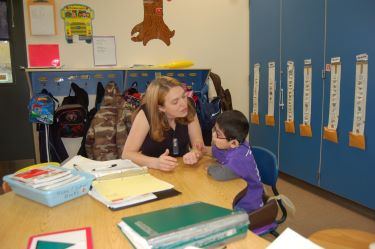Modifications to the Learning Environment
Environments that promote communication and learning for children and youth who are deafblind are structured to encourage movement, engagement, and interactions with others.
They consist of physical places and the people, activities, and materials within them. Features include:
- Physical spaces that are accessible, including modifications to auditory and visual conditions that maximize the use of any residual hearing and vision
- People who are respectful and responsive
- Consistency and predictability
- Interesting (including tactually interesting) materials and activities
See also:

The individual who has vision and hearing loss can still build and enjoy a sturdy foundation for learning, and learn to master his powerful uniqueness. The results, however, will depend on an environment that invites and supports learning.(Greeley & Anthony, 1995, p. 185)
Introductory Resources
Learn More
Considerations for Educating Students With CVI: The Learning Environment (PA Training and Technical Assistance Network)
Managing the Environment to Modify Behavior (from OHOA Module "Behavior and Environmental Supports")
Offline Resource
Olson, K., Miles, B., & Riggio, M. (1999). Environments than encourage communication. In B. Miles & M. Riggio (Eds.), Remarkable conversations: A guide to development meaningful communication with children and young adults who are deafblind (pp. 76-93). Perkins School for the Blind.
References
Greeley, J., & Anthony, T. L. (1995). Play interaction with infants and toddlers who are deafblind: Setting the stage. Seminars in Hearing, 16 (2), 185-191.
Olson, K., Miles, B., & Riggio, M. (1999). Environments than encourage communication. In B. Miles & M. Riggio (Eds.), Remarkable conversations: A guide to development meaningful communication with children and young adults who are deafblind (pp. 76-93). Perkins School for the Blind.
Stremel, S., Perreault, S., & Welch, T. R. (1995). Strategies for classroom and community. In K. M. Huebner, J. G. Prickett, T. R. Welch, & E. Joffee, (Eds.), Hand in hand: Essentials of communication and orientation and mobility for your students who are deaf-blind (pp. 411-441). AFB Press.
KEEP EXPLORING